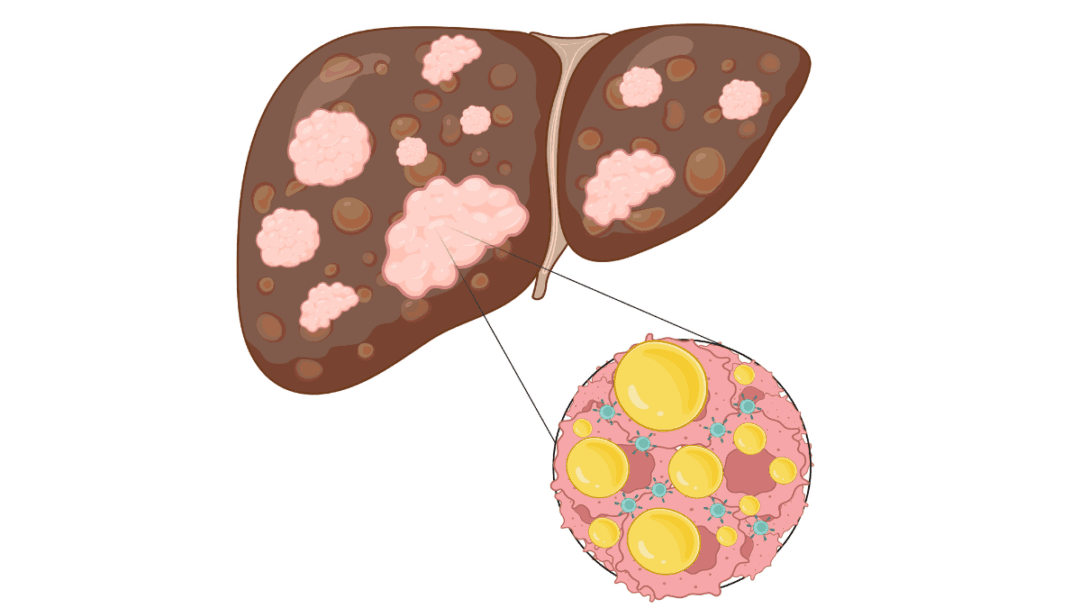The human body—our constant companion, our biological vessel, our most personal of machines—is a marvel of nature. It’s easy to take it for granted. After all, it’s always with us, growing, healing, hurting, and carrying us through each moment of our lives. But beneath the skin, inside the cells, and throughout the systems that weave us together, the body hides wonders that can astonish even the most seasoned scientists.
You may think you know your body well. You might be aware of how your heart beats or what your lungs do. But some of the most extraordinary features of the human body remain largely hidden, obscure, or misunderstood. From incredible feats of strength and regeneration to the brain’s mysterious power and the gut’s secret intelligence, our body holds countless secrets—many of them stranger than fiction.
So prepare to look at yourself a little differently. Here are ten mind-blowing, surprising facts about the human body, explored in depth, and guaranteed to change the way you think about being human.
The Brain Can Rewire Itself
One of the most astonishing truths about the human body is the brain’s ability to change, even in adulthood. This process is called neuroplasticity, and it upends the long-held belief that brain development ends in childhood.
At its core, neuroplasticity is the brain’s power to reorganize itself by forming new neural connections. When you learn a new language, pick up a musical instrument, or even recover from a stroke, your brain is actively rerouting its internal wiring.
Take stroke recovery as an example. When one part of the brain is damaged, other parts can sometimes take over the lost functions. This doesn’t happen instantly—it takes training, time, and effort—but it proves that the brain isn’t a static organ; it’s a dynamic, living structure constantly adapting to your experiences.
Even everyday learning—memorizing a phone number, developing muscle memory while driving, or mastering a new app—is a dance of neurons making new pathways. It’s why older adults who stay mentally active are often better protected against cognitive decline.
And here’s the most surprising part: the more you use your brain in new ways, the more plastic it becomes. Learning actually helps your brain stay ready to learn more. It’s not just a storage device. It’s a living, shifting ecosystem.
Bones Are Alive—and Stronger Than Steel
We often think of bones as dead, brittle structures, like dry sticks inside us. But this couldn’t be further from the truth. Bones are living, growing tissue, rich in blood vessels and nerves. They’re constantly breaking down and rebuilding themselves through a process called remodeling.
Every few years, your entire skeleton is replaced—recycled from the inside out by two kinds of cells: osteoclasts, which break down old bone, and osteoblasts, which build new bone.
But what really surprises people is how strong bones are. Ounce for ounce, human bone is stronger than steel. A cubic inch of bone can bear a load of nearly 19,000 pounds—roughly the weight of five pickup trucks. Yet bone is also much lighter than steel and far more flexible.
This combination of strength and adaptability is what allows bones to support your entire body, absorb shocks, and recover from damage. Break a bone, and if it’s set properly, it heals not just to function but often stronger at the point of fracture.
Bones also play a critical role in producing blood cells. Deep inside the marrow of your long bones, millions of new red and white blood cells are created every second.
Far from being just structural supports, your bones are factories, fortresses, and active players in your health.
Your Heart Has Its Own Electricity
The heart is a tireless organ, beating around 100,000 times a day. But what many don’t realize is that the heart can beat on its own, independent of the brain.
Nestled in the upper right chamber of the heart is a tiny patch of tissue known as the sinoatrial (SA) node—your heart’s natural pacemaker. This specialized cluster of cells generates electrical impulses that cause the heart muscles to contract rhythmically. In fact, if you were to remove the heart from the body (in a laboratory, not at home, please), it could keep beating for a while as long as it has oxygen and nutrients.
This autonomous beating is part of the intrinsic cardiac conduction system, and it explains why the heart is so resilient. In some transplant surgeries, the heart is taken from a donor, stopped, preserved, and then restarted in the recipient’s chest. Thanks to its internal wiring, it resumes beating without external prompting.
Your brain can influence the heart—via the autonomic nervous system—slowing or speeding it up depending on stress or relaxation. But the rhythm, the pulse of life itself, starts within.
It’s your own built-in metronome, ticking through every second of your life without a conscious thought.
Your Gut Is a Second Brain
It might sound like a metaphor, but the gut really does have a brain of its own—and scientists even call it the “second brain.” This complex network is officially named the enteric nervous system (ENS), and it contains over 100 million neurons—more than in the spinal cord.
The ENS doesn’t just handle digestion. It communicates directly with your central nervous system and can even influence mood and behavior. This brain-gut connection is why we get “butterflies” when we’re nervous, or why stress can cause stomachaches.
And here’s the kicker: about 90% of the serotonin in your body—a key neurotransmitter associated with mood, sleep, and appetite—is produced in the gut, not the brain.
This has huge implications for understanding mental health. Some researchers now believe that imbalances in gut flora—your microbiome—could contribute to depression, anxiety, and other conditions. Probiotics and diet might one day be used as standard tools in psychiatric care.
Your intestines are more than just tubes for digestion. They’re an ecosystem, a factory, and a communication hub that might hold some of the greatest secrets to mind-body health.
You Shed Your Skin—Constantly
Right now, as you read this, your body is getting rid of skin cells. In fact, it does so by the millions—every hour of the day. Over the course of a year, you shed roughly eight pounds of skin. Most of the dust in your house? It’s dead skin cells.
Your skin, the body’s largest organ, is in a constant state of renewal. The outermost layer—called the epidermis—is made up mostly of dead cells that form a tough, protective barrier. Beneath that, living cells are continuously dividing and pushing upwards to replace the old ones.
This turnover takes about 27 days. So every month, you’re essentially growing a new layer of skin.
And it’s not just a passive barrier. Skin plays an active role in immune defense, temperature regulation, and sensory input. It contains its own microbiome, secretes oils and sweat, and even synthesizes vitamin D when exposed to sunlight.
That glowing complexion after a spa day? It’s not magic. It’s biology.
You Are More Microbe Than Human
If you’re feeling particularly proud of being human, here’s a twist: you’re actually outnumbered by microbes.
For every human cell in your body, there are estimated to be at least as many microbial cells—bacteria, viruses, fungi, and other tiny organisms. The human microbiome is a vast and diverse community that lives on your skin, in your mouth, up your nose, and—most importantly—in your gut.
These organisms aren’t freeloaders. They help digest food, train your immune system, produce essential vitamins like B12 and K, and even affect your brain chemistry.
Your microbiome is so personalized that it’s sometimes referred to as a microbial fingerprint—more unique than your DNA. Disruptions to this ecosystem can lead to everything from food allergies to autoimmune diseases to mood disorders.
Scientists are even exploring “fecal transplants”—yes, it’s what it sounds like—as ways to treat severe infections and gut imbalances by transferring healthy microbiota from one person to another.
So if you think of yourself as a single creature, think again. You’re a bustling city of trillions.
Your Eyes Are High-Speed Super Sensors
Eyes are often called the windows to the soul, but they’re also high-tech optical instruments that rival anything we’ve ever invented.
Each eye contains over 100 million photoreceptor cells, which convert light into electrical signals sent to the brain. The human eye can distinguish around 10 million different colors, and it adjusts to light intensity across an astonishing range—ten orders of magnitude from a dark room to bright sunlight.
But perhaps most surprising is their speed. Visual processing in the human brain is so fast that athletes and drivers can make split-second decisions based on subtle cues in their environment. The eye sends signals to the brain at speeds of over 250 miles per hour, making it one of the fastest responding systems in the body.
And those rapid micro-movements your eyes make—even when you think you’re staring straight ahead—are called saccades. These tiny shifts help your brain construct a detailed visual map by sampling multiple angles every second.
In short, your eyes are not passive receivers. They’re active scanners, processing and filtering a flood of information before you’re even aware of it.
Blood Is Always on the Move—And Everywhere
Blood isn’t just a red liquid—it’s a high-efficiency transport system, a communication network, and a battlefield all in one.
An average adult has about 5 liters of blood, and your heart pumps this supply through your body over 1,000 times a day. In total, your blood travels about 12,000 miles daily—enough to circle the globe nearly twice.
Inside this crimson river are red cells that carry oxygen, white cells that fight infection, platelets that stop bleeding, and plasma that ferries hormones, nutrients, and waste.
But what’s truly amazing is how precisely your blood system adjusts. Cut yourself, and platelets rush in to clot. Run uphill, and blood diverts more oxygen to muscles. Eat a heavy meal, and the flow shifts toward the digestive system.
And even though blood is everywhere, it never mixes directly with most tissues. Instead, it delivers resources via capillaries and microscopic diffusion—like a perfectly organized logistics company.
There’s poetry and power in every beat.
You’re Glowing—Literally
Here’s a fun, strange fact: the human body emits light.
It’s called biophoton emission, and it occurs because of chemical reactions in the cells that release photons, or light particles. This glow is a trillion times weaker than what the naked eye can detect—but it’s there.
Researchers using ultra-sensitive cameras have actually recorded the subtle glow from human skin, which varies throughout the day and peaks in the late afternoon.
While this isn’t the same as fireflies or glowing jellyfish (which use dedicated light-producing organs), it does suggest that the body is never completely dark. Some scientists believe these faint emissions might one day be used as biomarkers for disease, since the intensity of the glow can change with metabolism and oxidative stress.
So next time someone says you’re radiant, they might be more right than they know.
You’re an Original—Down to the Cells
You already know that your fingerprint is unique. But did you know that no two humans have identical tongues, retinas, ear shapes, or even body odor?
Your body is marked with individuality in ways that go far beyond DNA. Your immune system, for instance, is trained by exposure—so even identical twins have different antibody repertoires. Your voice is a unique result of your vocal cords, lung capacity, skull shape, and nasal cavity.
Even your gait, the way you walk, is specific enough that AI can now identify people by it.
At the cellular level, mutations, epigenetic shifts, and environmental interactions shape you into a biological fingerprint—one that is constantly changing. In fact, you’re not the same person you were ten years ago, in a literal sense. Nearly every cell has turned over, every hair replaced, every surface remodeled.
You are, in every possible way, one of a kind.
Conclusion: The Beautiful Complexity of Being Human
The human body is not just a machine. It’s a universe—a galaxy of systems and cells, neurons and signals, microbes and memories. It’s resilient, adaptable, and capable of feats that rival any fiction.
And while we’ve only scratched the surface of its mysteries, what we do know is enough to fill us with awe. Our bones carry more than weight—they carry life. Our brains are more than processors—they are shapeshifters. Our guts are minds, our skin is alive, and our blood whispers the language of survival in every beat.
To live inside such a body is not just a fact. It’s a miracle.
And the more we learn about it, the more we realize: we are not just passengers in this body—we are explorers of it.






